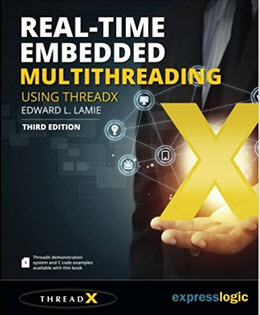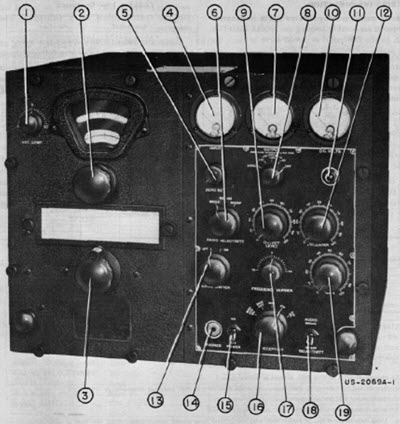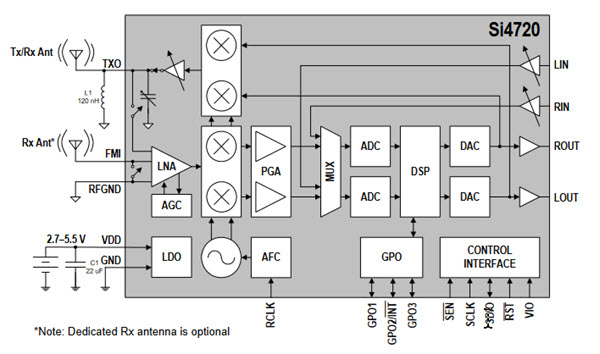|
||||
You may redistribute this newsletter for non-commercial purposes. For commercial use contact jack@ganssle.com. To subscribe or unsubscribe go here or drop Jack an email. |
||||
| Contents | ||||
| Editor's Notes | ||||
A lot of prospective entrepreneurs contact me for advice. I always recommend they read the first half of The E-Myth by Michael Gerber. Gerber's contention, which I've observed countless times, is that too many owners of small businesses are completely focused on working in the business - that is, doing the consulting, making the products, and generally engaging in the main business activity. Instead, one should (at least some of the time) focus on working on this business. That might include finding ways to increase productivity. Reduce taxes owed. Deliver faster. But unless one is actively making the business better, decay and entropy will prevail. This is what my Better Firmware Faster seminar is about. Take a day with your team to learn to be more efficient and deliver measurably-better code. It's fast-paced, fun, and uniquely covers the issues faced by embedded developers. Information here shows how your team can benefit by having this seminar presented at your facility.
On June 27-28 NIST will host the Sound Static Analysis for Security Workshop at NIST's facility in Gaithersburg, MD. To quote from their communications "this two-day workshop is focused on decreasing software security vulnerabilities by orders of magnitude, using the strong guarantees that only sound static analysis can provide. The workshop is aimed at developers, managers and evaluators of security-critical projects, as well as researchers in cybersecurity." I plan to attend. It's free, and there's more info here. |
||||
| Quotes and Thoughts | ||||
What one programmer can do in one month, two programmers can do in two months. Fred Brooks |
||||
| Tools and Tips | ||||
Please submit clever ideas or thoughts about tools, techniques and resources you love or hate. Here are the tool reviews submitted in the past. Kyle Bostian wrote: C gibberish to English converter. No further explanation needed. Also available as a command line tool. https://cdecl.org/ |
||||
| Freebies and Discounts | ||||
This month, thanks to the folks at Expresslogic, we're giving away 8 copies of Real-Time Multithreading, a great book about RTOSes in general and ThreadX in particular.
Enter via this link. |
||||
| Are Bugs a Problem, Given Quick Fixes (Redux)? | ||||
In TEM348 I wrote that there's a meme going around that bugs aren't really a problem, if you can fix them quickly. My take is that bugs are a problem, and instead of quick fixes we need to get the code right to begin with. Not everyone agreed! Here are some dissenting opinions. Note that in my comments I said that if a store sold me sour milk (an analogy to providing buggy code), I'd stop shopping there. Charles Manning wrote:
Bryan Murdok contributed this:
|
||||
| On Declining Magazine Quality | ||||
TEM348 bemoaned the quality of technical journalism. John Black had this to say:
|
||||
| The Boston Embedded Systems Conference | ||||
The first Embedded Systems Conference was in 1989 at the Sir Francis Drake hotel, a wonderful venue where one heard the tinkle of San Francisco's streetcars over the speakers' voices. It was small, with about 400 attendees, but was soon to grow. At its peak in the 1990s some 15,000 people showed up. Motorola (now Freescale... uh, NXP) put on enormous Texas-themed parties, with oceans of beer, bands and dancing. Intel, Wind River (now not part of Intel, having just been sold) and others had huge booths and hundreds of vendor stands crowded the show floor. The Boston ESC last month was rather a shadow of its former glory, with about 30 vendors and around 1000 attendees. Co-located with the BIOMEDevice show the floor was pretty big, though the vast majority of the booths were for the latter event. Still, it was interesting to stroll those stands and watch many 3D printers and robots at work. I wrote in Muse 346 that pretty much all of the important oscilloscope vendors had booths at Embedded World in Germany. 20% of the ESC's booths were for scope vendors: Siglent, Tek, Pico, etc. Keysight wasn't there. Surprisingly, only three RTOS vendors showed up. I was only able to attend a couple of talks, but those were of outstanding quality. Dan Beeker's Electromagnetic Fields for Normal Folks could have run a week and I'd still be entranced. A bit quirky at first (he played a recorded song he wrote called "It's All About the Space," which stressed the need to focus on space rather than wiring), he wants us to think in terms of waves rather than electrons. A couple of interesting factoids he gave include that the "4" in FR4 PCB material means the speed of a wave on that PCB is about one quarter that of c in a vacuum. And there's a 200 dB reduction in field strength from the top of a board to the bottom if there's a ground plane in between. A session sponsored by Rohde&Schwarz and given by Mike Schnecker called Understanding Probes and Probing Techniques for Signal Integrity was equally compelling. Turns out, the conventional scope probe we grew up with is now called a "browser" probe, as one can browse around a circuit board with it. Alas, with modern high-speed circuits browser probes are often inadequate for our needs. Active probes with extremely-close ground connections are often needed instead, sometimes at enormous expense. Mike showed that with a differential probe the inductance is roughly proportional to the area enclosed by the two leads; he figures a 14 pF probe and 3 cm enclosed area has a resonance of 100 MHz. Curious, I used the formula for resonance in an LC circuit Though the show was small there was a lot of useful material presented. |
||||
| This Week's Cool Product | ||||
There was a time when a superhet radio was about the epitome of electronics. RCA sold the earliest consumer superhetrodyne radio in 1924; 148,000 flew off the shelves in the very first year at a price of $286 (about $4000 in today's dollars). It had six vacuum tubes, equivalent to six transistors. In the 1960s I had a world-war II era RBC receiver in my ham radio shack, which had 19 tubes. It must have weighed 100 pounds, not including the separate power supply box:
These hulking monsters can now be replaced by a chip weighting a gram or so. It used to be one had to be an expert at hetrodyning, mixing, and RF design to build a radio. No longer; it's now possible to get a radio on a chip. Silicon Lab's Si4720 is a very cool example. This is a receiver/transmitter for the FM radio band. Add a microcontroller and you're pretty much done. The antennas go straight into the chip without any tuned circuits.
At only 3 x 3 mm QFP, it's $12 in singles. Hackaday has a radio project using this device. Note: This section is about something I personally find cool, interesting or important and want to pass along to readers. It is not influenced by vendors. |
||||
| Jobs! | ||||
Let me know if you’re hiring embedded engineers. No recruiters please, and I reserve the right to edit ads to fit the format and intent of this newsletter. Please keep it to 100 words. There is no charge for a job ad. |
||||
| Joke For The Week | ||||
Note: These jokes are archived at www.ganssle.com/jokes.htm.
|
||||
| Advertise With Us | ||||
Advertise in The Embedded Muse! Over 27,000 embedded developers get this twice-monthly publication. . |
||||
| About The Embedded Muse | ||||
The Embedded Muse is Jack Ganssle's newsletter. Send complaints, comments, and contributions to me at jack@ganssle.com. The Embedded Muse is supported by The Ganssle Group, whose mission is to help embedded folks get better products to market faster. |





 and found that this corresponds to around 150 nH.
and found that this corresponds to around 150 nH. 

